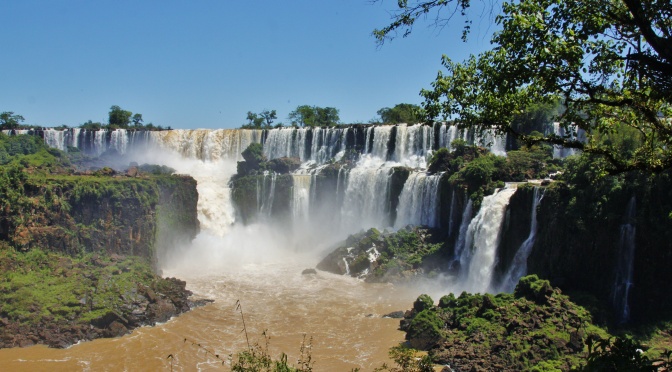Mendoza is the wine capital in a country renowned for its Malbec. I was looking forward to this leg of the trip for obvious reasons, but also because it marked a reunion with one of my dearest college friends, Molly, and her partner Nicol. Molly and I became close on a study abroad program to East Africa, and have remained tight with the group of friends we made on that trip. She has been living in Mendoza for the past three years with Nicol, who grew up there, and they were even featured on an episode of House Hunters International (from which I stole the title of this blog). Needless to say, I was stoked to visit the apartment I had watched them pick out on TV.
We arrived in Mendoza province a few days ahead of schedule, so instead of going directly to their place, we veered a bit off course to the sleepy hamlet of nearby San Rafael. Sunny, tranquil, and surrounded by copious vineyards, we didn’t mind killing a few days in Argentine wine country. Our long days there consisted mostly of lounging and reading, walking along the wide open streets and plazas, and picking up good bottles of local $3-4 vino before watching films from my favorite genre: bad Nicholas Cage movies (is there really any other kind?). One highlight from our time in San Rafael was taking the standard vineyard tour to the next level by visiting the Bianchi Champagnerie. Even they acknowledged that the bottles can’t officially be called “champagne” because of a trademark issue in France, but we all knew and appreciated it for what it was. Another day trip outside of town, Neil and I took a white-water rafting trip down the Rio Atuel which was a relatively mellow class 2, and afterwards I taught an impromptu hooping lesson to a little girl on the river bank. Our experience around San Rafael reminded me that some of the best parts of a trip are often completely unplanned.
The next stop was Mendoza proper, where we met up with Molly at her work place, Uncorking Argentina, which is a company that organizes personalized winery tours throughout the region. I was thrilled to see her again after literally years had passed, and we had a lot of catching up to do. The very next day after arriving was Thanksgiving and so while our hosts were at work, Neil and I spent the day prepping and cooking the obligatory feast. Instead of a turkey, Nicol made gourmet roasted chicken, but otherwise we had almost all of the traditional staples. We celebrated that evening by initiating two of Molly and Nicol’s Argentinian girlfriends to the holiday (read more about that on my other blog). My 27th birthday was only a couple of days later, so that required more celebrating, and I will admit that I drank my fair share of wine during those few days. Add to that the excursion we took with our French friend, Sebastien, to the Lujon region where we rented bikes and rode from tasting to tasting among the many sun-soaked vineyards concentrated in that area. Molly also surprised us with some gift vouchers for a “flight” at a fancy winery where we tasted possibly our favorite varietals of the entire trip.
Alas, we eventually had to say goodbye to Molly and Nicol, though I look forward to seeing this lovely pair again in the States next time. Fortunately we had another friend reunion to look forward to on our next leg of the journey, so the adventure continues in Santiago, Chile!





























































































